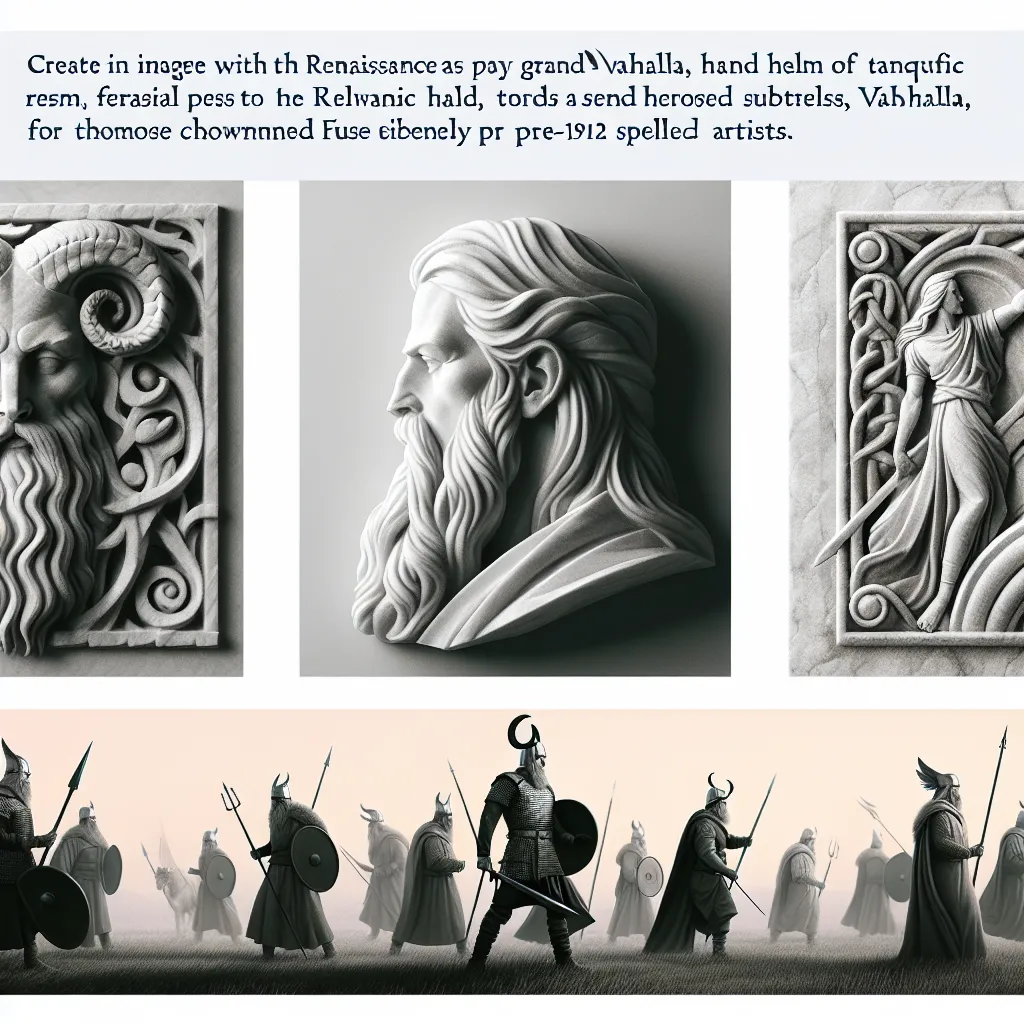
- Published on
- Authors

- Name
- You
The Norse Afterlife: Hel, Valhalla, and Folkvangr
The Norse vision of the afterlife is a tapestry of realms where gods, giants, and souls intermingle in a manner intricately linked to both their valor in life and the nature of their deaths. Understanding these realms requires an exploration into not just their mythological roots, but also into the ancient Norse culture, values, and cosmology.
Introduction to Norse Cosmology
The Norse cosmos is a complex and ordered entity divided into nine realms, all connected by Yggdrasil, the World Tree. Each realm has its own ruler, inhabitants, and significance. Among these realms are the distinct afterlife abodes: Hel, Valhalla, and Folkvangr.
Hel: The Realm of the Ordinary Dead
Hel is the land of the dead that shares its name with its ruler, the giantess Hel. Contrary to later Christian interpretations wherein it took on a hellish connotation, the original Norse Hel was a cold, shadowy place.
Characteristics of Hel:
- Ruler: Hel, daughter of Loki.
- Inhabitants: Those who did not die in battle.
- Appearance: A grey, misty, and cold land.
- Purpose: To provide a restful afterlife for those who passed away from sickness or old age.
Modern Interpretation:
Comparatively, Hel can be seen as a parallel to the neutral zones in various religious constructs, where souls neither suffer eternally nor enjoy the splendors reserved for heroes.
Valhalla: The Hall of the Slain
Valhalla, located in Asgard, is a majestic hall ruled by Odin, the All-Father. This afterlife is reserved for those who have died bravely in battle, known as the Einherjar.
Characteristics of Valhalla:
- Ruler: Odin.
- Inhabitants: Einherjar - warriors who died valiantly in combat.
- Appearance: A grand hall with endless feasts and battles.
- Purpose: To prepare warriors for the events of Ragnarok, the end-time battle.
Daily Activities:
- Feasts: Warriors feast on hog flesh and mead from a never-ending supply.
- Combat: Daily battles where wounds are miraculously healed.
Scientific Analogy:
Valhalla represents not just an honorific afterlife but also an ancient understanding of a reward system for bravery, akin to modern meritocracies where valor and skill are eternally celebrated.
Folkvangr: Freyja's Meadow
Folkvangr is another afterlife realm presided over by the goddess Freyja. It is equally as honored as Valhalla but far less frequently discussed.
Characteristics of Folkvangr:
- Ruler: Freyja, the goddess of love and war.
- Inhabitants: An unspecified portion of warriors who died in battle.
- Appearance: A beautiful meadow that mirrors Freyja's own allure.
- Purpose: A paradisiacal resting place for honored dead.
Freyja’s Choice:
Unlike the exclusive Valhalla, Folkvangr reflects Freyja’s autonomy in choosing souls, possibly suggesting a divided view of honor between deities.
Modern Interpretations:
Folkvangr presents an alternative honorific realm that could be compared to other cultures' paradisiacal afterlives, emphasizing beauty and peace.
Comparison Table
| Realm | Ruler | Inhabitants | Appearance | Purpose |
|---|---|---|---|---|
| Hel | Hel | Those who did not die in battle | Cold, grey, misty | Restful afterlife for the ordinary dead |
| Valhalla | Odin | Warriors who died in battle | Grand hall, endless feasts | Preparation for Ragnarok |
| Folkvangr | Freyja | Portion of warriors from battle | Beautiful, serene meadow | Peaceful afterlife, chosen by Freyja |
Conclusion
The realms of Hel, Valhalla, and Folkvangr paint a diverse picture of Norse afterlife beliefs, reflecting a culture that deeply honored valor while also accepting the natural end that accompanies every life. These ancient views provide a window into how the Norse perceived life, death, and the perpetual balance between honor and rest. Bridging these ancient concepts with modern interpretations can enrich our understanding of both historical and contemporary perspectives on the afterlife.
Journey through these realms with reverence and curiosity, and may the understanding of these age-old traditions deepen your appreciation of life's ultimate passage.
